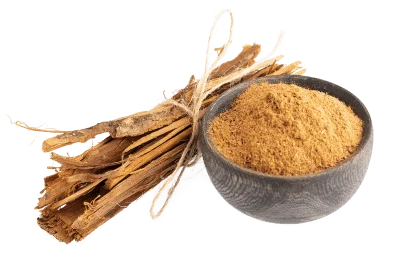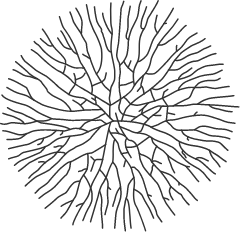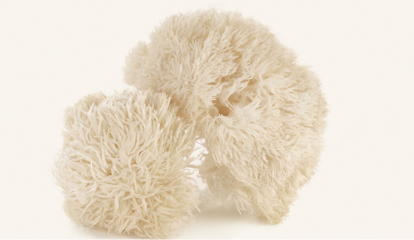Neuroplasticity is a term referring to the brain’s ability to modify and adapt throughout life, both structurally and functionally, as neural networks change through growth and reorganisation. Essentially, it describes the flexibility of the brain and neurological system as it creates new neural pathways and connections...................

As we journey through life, the experiences we encounter shape the structure of our brains, creating neurological connections and adapting pre-existing pathways to accommodate new information. For a long time, neuropsychological studies suggested levels of neuroplasticity decreased over time. The implication was that as we grow older, the less the brain can adapt pre-existing pathways or create new ones. The adage ‘you can’t teach an old dog new tricks’, directly comes from this idea of losing neuroplasticity over time.
However, recent studies are now discovering that diminishing neuroplasticity is not necessarily time dependent and can be affected by other factors, such as nutrition, exercise, and various medical conditions. For instance, silent, or chronic, brain inflammation can have a devastating effect on the levels of neuroplasticity, without the individual experiencing strong symptoms. This kind of inflammation is also very difficult to measurable on a macro scale, and is only detectable when the signs of this inflammation is sought. This makes it a serious risk as due to this inflammation the development of plaques and tangles occur.
Another neurotoxic protein that accumulates in the aging brain is known as the ‘tau protein’ which forms twisted paired helical filaments inside neurons (or nerve cells) called tangles. Research investigating these plaques and tangles found these plaques and tangles to be instrumental in killing healthy neurons (i.e. nerve cells), thus, leading to declines in memory and cognition within the normal aging brain. Silent inflammation refers to a chronic inflammatory response that is triggered by the immune system.
The body’s natural process of self-healing begins with subtle acute inflammation. However, if this inflammation remains activated it becomes chronic and can remain so for years. Many long term studies examined chronic inflammation and its effect on memory and found higher levels of inflammation was associated with steeper declines in thinking and memory skills. In addition, silent inflammation is also associated with the development of amyloid plaque and tangle deposits in the brain.
Halting the process of brain aging can be as easy as consuming a Cat's Claw or Greek Mountain Tea supplements; however, the combination of these two amazing botanicals creates a powerful synergistic effect. This means that the two plants enhance each other, working together to increase the effects of each plant.

15 years of pioneering research conducted by Dr. Alan Snow and his team sought to uncover solutions to plaque and tangle build-up in the brain and identified a woody vine known as Cat’s Claw (Uncaria Tomentosa), used for centuries by Peruvian tribes for immune enhancement and support. Examining Cat’s Claw, Dr. Snow discovered that specific polyphenol ingredients, such as PTI-00703®️, contained within the vine were potent inhibitors and disruptors of brain plaques and tangles.
Clinical studies found that these polyphenol ingredients were seen to cross the blood-brain-barrier rapidly, entering the brain tissue within 2 minutes after treatment. Similarly, further studies documented that Cat’s Claw can reduce and prevent the formation and accumulation of brain plaques by 74-82% after only 3 months of daily consumption. This is also due to Cat’s Claw being a powerful anti-inflammatory. Studies suggest the development of plaques and tangles are initiated by inflammation occurring in the brain. Thus, reducing this inflammation is paramount when seeking to reduce the development of these plaques and tangles.
Research has consistently shown Cat’s Claw to be a formidable supplement, improving memory, focus, and concentration. However, to get the maximum results from a Cat’s Claw supplement it is very important to have a high concentration extract with the right amount of active ingredients, such as polyphenols.

Similar to the effects of Cat’s Claw, Greek Mountain Tea has been identified as a powerful brain cleanser by ground-breaking research, conducted by Prof. Jens Pahnke. His research investigating the development of neurodegenerative diseases, such as Alzheimer’s and dementia, also identified the presence of amyloid plaque deposits as a major factor in the process of cognitive decline. Shifting focus from what is the cause to possible solutions, Prof. Pahnke discovered a centuries-old remedy, Greek Mountain Tea, and began conducting studies with this plant. Findings revealed that treatment using a powerful Greek Mountain Tea extract led to a reduction in plaque deposits by 80%. In addition, Greek Mountain Tea also has a powerful anti-inflammatory effect. Reducing brain inflammation is a crucial factor in the development of plaque and tangle deposits, as it is the inflammation of the neurological system that leads to plaque and tangle development.
Our effective formula Memory Recall® utilises the synergy, combining Uncaria Tomentose (Cat’s Claw) and Sideritis Scardica (Greek Mountain Tea) to maximise and multiply their medicinal benefits; reducing brain inflammation to stop the development of plaques and tangles, then cleansing the brain to remove these plaques and tangles.
After cleansing the brain of plaques and tangles and reducing the levels of inflammation causing plaque and tangle build-up, it is important to regenerate a high level of neuroplasticity. Lion’s Mane is a powerful botanical whose active ingredients have a multitude of neuroprotective qualities. Both the fruiting body and mycelium (underground fungal network) of Lion’s Mane contain extraordinary properties that enhance the levels of neural functioning.
Lion’s Mane contains two particular compounds that are unique to the fungus. Hericenones are aromatic compounds isolated from the fruiting body while erinacines are groups of cyathia diterpenoids that are primarily found in the Lion’s mane mycelium. Both hericenones and erinacines have various neuroprotective qualities, including Nerve Growth Factor (NGF) synthesis, reducing amyloid-B deposition, and managing neuropathic pain. NGF is a neurotrophic factor that plays a major role in stimulating the growth of new neurons, improving the brain’s capacity to build new neural networks, supporting myelination, and the survival of neurons. It is seen to promote nerve cell recovery and plays a crucial role in the survival of neurons in the basal forebrain complex (BFC); an area of the brain where attention, motivation, memory, and consciousness functions. Research has highlighted the BFC as a primary target area of neurodegenerative diseases, such as Alzheimer’s, and indicated NGF as a potential protective factor when combating these conditions.

Mycelium refers to the part of the mushroom that remains hidden underground. If you visualise the entire fungus like a plant, the mushroom on top would be the flower and mycelium it’s root system. There are incredibly valuable nutrients in both the mycelium and the fruiting body of certain mushrooms. The most important ingredients we use in our unique Memory Recall® formula are erinacines and beta-glucans contained within Lion’s Mane. Interestingly, some erinacines are only found within the Lion’s Mane mycelium, highlighting how valuable this part of the fungus is. Erinacine S, only found in the mycelium of Lion’s Mane, studies have shown to reduce amyloid plaque growth and improve neurogenesis. Studies also suggest that Erinacine S is responsible for a large proportion of the NGF stimulation. NGF enhances neuroplasticity as well as stimulating healthy and stable neurological production and connection throughout the body, strengthening not only cognitive functioning but overall immune system support.

To date 8 hericenones and 15 erinacines have been identified within Lion’s Mane. All hericenones are isolated from the fruiting body, however, only erinacine A and B are isolated from this part of the fungus. These fruiting body compounds contain various neuroprotive properties. Studies examining these bioactive ingredients suggest that hericenones (particularly C,D, and E) stimulate activity for the biosynthesis of NGF in vitro, while erinacine A protects the brain against numerous cognitive disorders, such as stroke, Parkinson’s disease, Alzheimer’s disease, depression, and neuropathic pain.
Our unique formula Memory Recall® combines extract from both the Lion’s Mane fruiting body and mycelium to develop a powerful cognitive regenerator. Containing both extracts, this unique formula provides the highest levels of active ingredients present within all parts of the Lion’s Mane fungus, creating a potent synergy. This synergy boosts NGF providing you with the maximum benefits that rebuilds neuroplasticity and overall cognitive functioning.